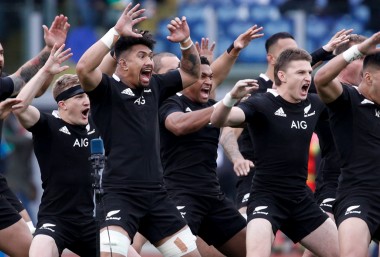On 22 April 2014, the Haka Ka Mate Attribution Bill became part of our law. This Act is the first of its kind in New Zealand because it's the first piece of legislation to arise out of settlement negotiations that provides some quasi-intellectual property protection to a taonga (treasure) of an iwi.
Here we explain what the legislation means and what the right of attribution includes and when it doesn't apply.
What does this legislation mean?
The Act gives effect to provisions in the deed of settlement between Ngāti Toa Rangatira and the Crown.
The deed of settlement required the Crown to recognise that Ngāti Toa Rangatira hold a right of attribution in relation to the Ka Mate haka.
The deed also required the Crown to acknowledge:
- the significance of the haka Ka Mate as a taonga of Ngāti Toa Rangatira
- the significance of the haka Ka Mate as an integral part of the history, culture and identity of Ngāti Toa Rangatira
the statements (as set out in the schedule of the Act) made by Ngāti Toa Rangatira relating to:
- Te Rauparaha, the composer of the Ka Mate haka
- the composition of the Ka Mate haka
- the association of Ngāti Toa Rangatira with Ka Mate and their role as kaitiaki (guardians) of Ka Mate
- the values of Ngāti Toa Rangatira concerning the use and performance of the Ka Mate haka.
The Act provides for a right of attribution over Ka Mate, including the words, and actions and choreography of the haka. This protection applies whether the whole of the haka is used, or only a part.
What is the right of attribution?
The Act grants Ngāti Toa Rangatira a right of attribution. The right of attribution only applies to:
- any publication of Ka Mate for commercial purposes
- any communication of Ka Mate to the public
- any film that features Ka Mate and is shown in public or issued to the public.
The right of attribution requires a statement that Te Rauparaha was the composer of Ka Mate, and a chief of Ngāti Toa Rangatira. The statement must be 'clear and reasonably prominent' and used in a way likely to bring the attribution to the attention of the viewer or listener. The exact form of the statement in any instance will be a matter of judgement, depending on the nature of the use of Ka Mate.
This right does not apply to:
- any performance of Ka Mate, including by a kapa haka group
- any use for educational purposes
- any work made for the purpose of criticism, review or news reporting
- any communication of the above that is not for commercial purposes.
The Act does not, therefore, prevent performances by kapa haka groups, school groups, sports teams, or groups of intoxicated Kiwi in London. It also does not in any way interfere with the use of Ka Mate by the All Blacks, as Ngāti Toa Rangatira and the New Zealand Rugby Union have an agreement to allow the performance of the haka, which reinforces the mutual respect both parties have for the work.
It is not clear how much of Ka Mate would need to be used before the user is under an obligation to attribute. Given that enforcement of the Act rests with Ngāti Toa Rangatira (which we will discuss in more detail later), it can be expected that it must be a phrase, or part of the choreography, that is recognisable as being from Ka Mate, before Ngāti Toa Rangatira would consider it worthwhile taking action.
It is possible to enter into a written agreement with Ngāti Toa Rangatira, changing or removing the obligations under the Act.
Should a question of interpretation of the Act arise before a court, the Act provides guidance on the approach the court should take. The Act records that it is Parliament's intention that the provisions in the Act be interpreted in a manner that best furthers the agreements reached by the deed of settlement. Therefore, a court will be required to look to the deed, and to interpret the Act in light of that agreement.








